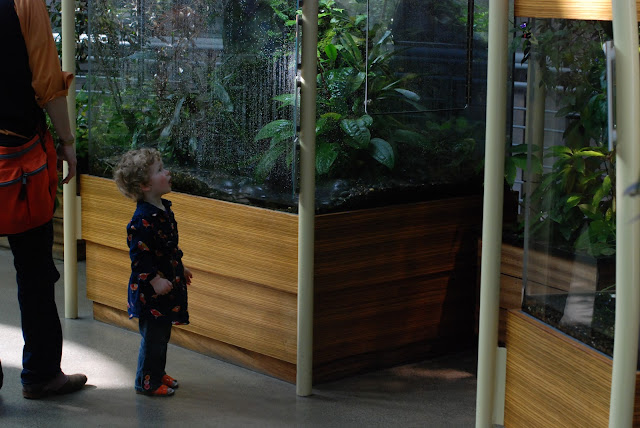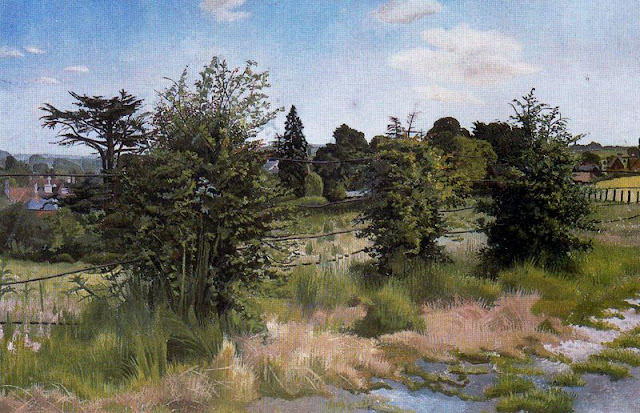
Most of these pictures were taken inside the 4-story Rainforest environment, humid and hot, where abundant tropical butterflies and birds in flashing colors occupy the same unrestricted spaces as the visitors on the upward-spiraling ramps, without barriers. All three of us could stand watching their hovering, their flight, their visits to a little round treetop feeding table. We stood right next to a shrub with little purple flowers while a dozen or more striped or incandescent-blue butterflies sucked nectar from those flowers with no seeming awareness of our human presence at all. (Perhaps treetop tropical butterflies have no need to comprehend what human beings might be, so feel safe in ignoring them.) A discreet sign by the elevator that whisks visitors from the top of the exhibit down to the tunnel underneath the rainforest pool (full of large active rainforest fish and other swimming creatures) asks people to check for any butterflies that might be clinging to their clothing, so as not accidentally to carry them out of their warm bright expensive artificial paradise.
We had lunch on a terrace to one side of the new complex built by Renzo Piano for the California Academy of Sciences. Mabel Watson Payne had a baby ice cream cone for dessert.

















































